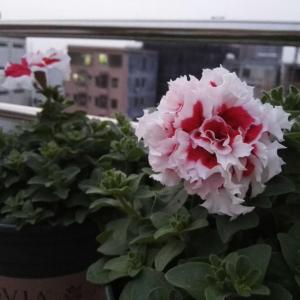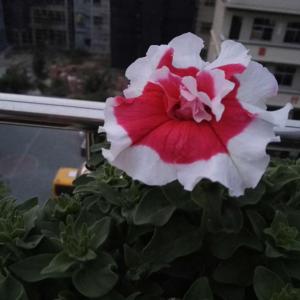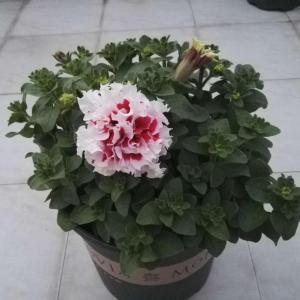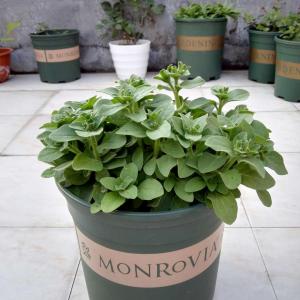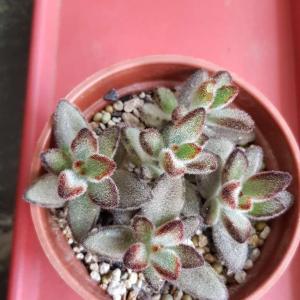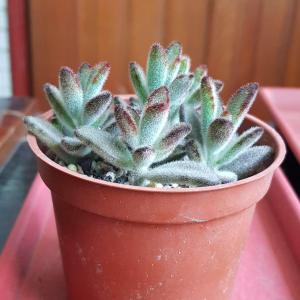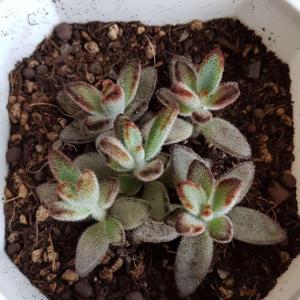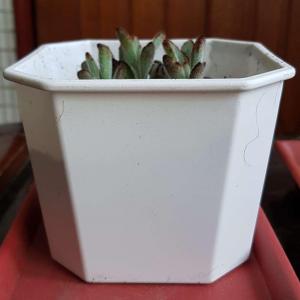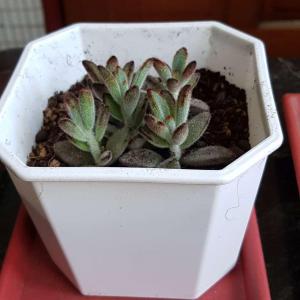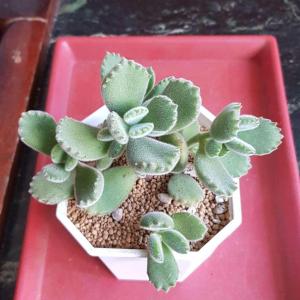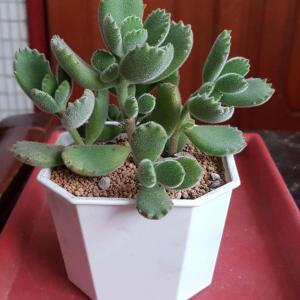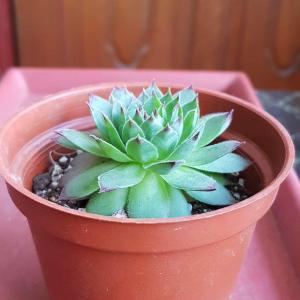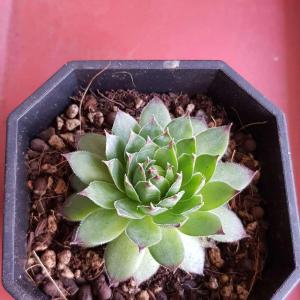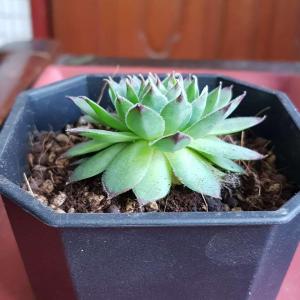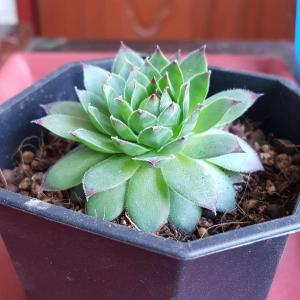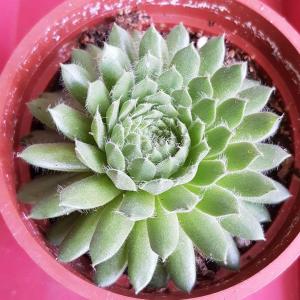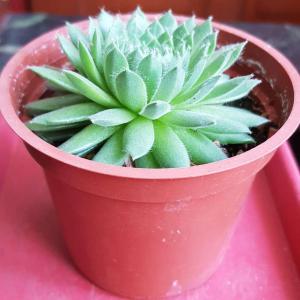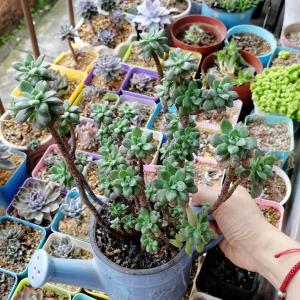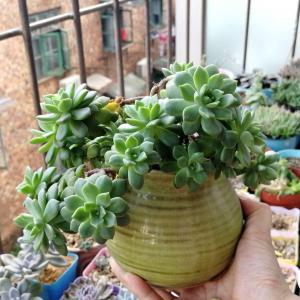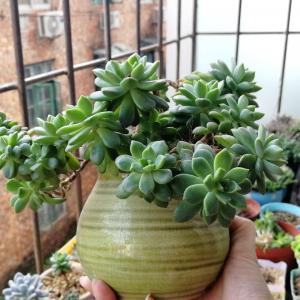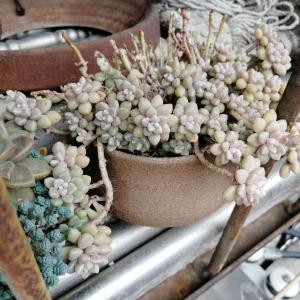文章
Miss Chen
2018年04月02日

Description: This woody shrub is about 2-4' tall, branching occasionally. Young branches are green, while older branches are grey or brown. They have two kinds of thorns: long thorns about ½" long that occur in groups of 1-3 near the petioles of the leaves (or where the petioles used to be located), and shorter thorns about ¼" or less that are abundant on major branches, but fewer in number or absent on smaller branches. These thorns are straight and brown to reddish brown. The leaves occur alternately along the branches in groups of 1-3. Each leaf is up to 2" long and across; it is palmately lobed and crenate along the margins. There are usually 3-5 major lobes per leaf, and several lesser lobes; they are cleft and taper to blunt tips. The upper surface of each leaf is slightly pubescent to hairless, while the lower surface is pubescent to slightly pubescent. Each leaf is cordate (indented) at the base where the petiole joins the blade. The petioles are usually hairy and up to 1½" long. Flowers are produced in groups of 1-3 near the petioles of some leaves; the inflorescence is either a branched cyme or a short raceme, from which the flowers droop downward. The slender pedicels of the flowers are green and pubescent or slightly hairy.
Each flower is about 1/3" (8 mm.) long and greenish yellow; it consists of short tubular calyx with 4-5 spreading lobes, a similar number of stamens, and a prickly or bristly ovary underneath. The short lobes are oblong to oval in shape, while the stamens extend no farther than the tubular calyx (they are not exerted). The petals are smaller than the calyx lobes and insignificant. The blooming period occurs during late spring and lasts about 2 weeks. Each fertilized flower develops into a globoid berry about 1/3" (8 mm.) across or a little larger. Immature berries are shiny and green, but they later become dull red or dull purple. All berries have conspicuous prickles. The berries are juicy and contain several minute seeds. The root system is branching and woody.
Cultivation: The preference is partial sun, mesic to dry conditions, and loamy or rocky soil. In excessive shade, flowers and fruit may fail to develop. Gooseberries and currants (Ribes spp.) are alternate hosts to White Pine Blister rust.

Range & Habitat: The native Prickly Gooseberry occurs occasionally in central and northern Illinois, while in the southern part of the state it is uncommon or absent (see Distribution Map). Habitats include thin rocky woodlands, wooded slopes, woodland borders, and limestone bluffs. Some disturbance is beneficial to this species if it reduces the overhead tree canopy.
Faunal Associations: The flowers attract honeybees, bumblebees, Large Carpenter bees, Andrenid bees, Syrphid flies, and various ants; most of these visitors suck nectar from the flowers, although Andrenid bees also collect pollen. The bees are more effective pollinators than either flies or ants. The caterpillars of the butterflies Polygonia faunus (Green Comma) and Polygonia progne (Gray Comma) feed on the foliage of Ribes spp. (Gooseberries, Currants). The Insect Table lists additional insects that feed on gooseberries and currants. Some songbirds eat the fruit, including the Catbird, Robin, Brown Thrasher, and Cedar Waxwing. Various mammals eat the fruit as well, including the Red Fox, Raccoon, Striped Skunk, Red Squirrel, Deer Mouse, and White-Footed Mouse. These animals help to distribute the seeds to new locations. To some extent, White-Tailed Deer browse on the branches and leaves, notwithstanding the presence of thorns.

Photographic Location: A rocky bluff with oak trees in Vermilion County, Illinois. In the photograph of leafy branches, there is some evidence of browsing by deer.
Comments: The most striking feature of this shrub is its prickly berries. It is unclear what advantage this provides in comparison to berries without prickles. Other species of plants produce prickly fruits as well – e.g., some Opuntia spp. (Prickly Pear Cacti) have prickly fruits that are offered for sale in grocery stores. In addition to its prickly berries, Prickly Gooseberry can be distinguished from other Ribes spp. (Gooseberries) by the inserted stamens of its flowers and leaves with indented bases (cordate). Other Gooseberries in Illinois have non-prickly berries, flowers with exerted stamens, and leaf bases that are truncate, rounded (obtuse), or less indented. Those Ribes spp. that are Currants have larger clusters of flowers/berries (5 or more). Prickly Gooseberry is more common in areas that are located to the north and east of Illinois.
Each flower is about 1/3" (8 mm.) long and greenish yellow; it consists of short tubular calyx with 4-5 spreading lobes, a similar number of stamens, and a prickly or bristly ovary underneath. The short lobes are oblong to oval in shape, while the stamens extend no farther than the tubular calyx (they are not exerted). The petals are smaller than the calyx lobes and insignificant. The blooming period occurs during late spring and lasts about 2 weeks. Each fertilized flower develops into a globoid berry about 1/3" (8 mm.) across or a little larger. Immature berries are shiny and green, but they later become dull red or dull purple. All berries have conspicuous prickles. The berries are juicy and contain several minute seeds. The root system is branching and woody.
Cultivation: The preference is partial sun, mesic to dry conditions, and loamy or rocky soil. In excessive shade, flowers and fruit may fail to develop. Gooseberries and currants (Ribes spp.) are alternate hosts to White Pine Blister rust.

Range & Habitat: The native Prickly Gooseberry occurs occasionally in central and northern Illinois, while in the southern part of the state it is uncommon or absent (see Distribution Map). Habitats include thin rocky woodlands, wooded slopes, woodland borders, and limestone bluffs. Some disturbance is beneficial to this species if it reduces the overhead tree canopy.
Faunal Associations: The flowers attract honeybees, bumblebees, Large Carpenter bees, Andrenid bees, Syrphid flies, and various ants; most of these visitors suck nectar from the flowers, although Andrenid bees also collect pollen. The bees are more effective pollinators than either flies or ants. The caterpillars of the butterflies Polygonia faunus (Green Comma) and Polygonia progne (Gray Comma) feed on the foliage of Ribes spp. (Gooseberries, Currants). The Insect Table lists additional insects that feed on gooseberries and currants. Some songbirds eat the fruit, including the Catbird, Robin, Brown Thrasher, and Cedar Waxwing. Various mammals eat the fruit as well, including the Red Fox, Raccoon, Striped Skunk, Red Squirrel, Deer Mouse, and White-Footed Mouse. These animals help to distribute the seeds to new locations. To some extent, White-Tailed Deer browse on the branches and leaves, notwithstanding the presence of thorns.

Photographic Location: A rocky bluff with oak trees in Vermilion County, Illinois. In the photograph of leafy branches, there is some evidence of browsing by deer.
Comments: The most striking feature of this shrub is its prickly berries. It is unclear what advantage this provides in comparison to berries without prickles. Other species of plants produce prickly fruits as well – e.g., some Opuntia spp. (Prickly Pear Cacti) have prickly fruits that are offered for sale in grocery stores. In addition to its prickly berries, Prickly Gooseberry can be distinguished from other Ribes spp. (Gooseberries) by the inserted stamens of its flowers and leaves with indented bases (cordate). Other Gooseberries in Illinois have non-prickly berries, flowers with exerted stamens, and leaf bases that are truncate, rounded (obtuse), or less indented. Those Ribes spp. that are Currants have larger clusters of flowers/berries (5 or more). Prickly Gooseberry is more common in areas that are located to the north and east of Illinois.
0
0
文章
Miss Chen
2018年04月01日

Description: This perennial wildflower consists of a small tuft of basal leaves and flowering stalks; a tufted plant is typically about 6" tall and 6" across. The basal leaves are usually divided into 3-5 leaflets; these leaflets are divided into narrow lobes and they may have a few teeth along their margins. There is a variety of Early Buttercup (var. apricus) with basal leaves that are shallowly divided into wide lobes or teeth, but it is uncommon. Each basal leaf has a long slender petiole. The flowering stalks are light green to purplish brown; each stalk has 1-2 cauline leaves. The cauline leaves are smaller in size than the basal leaves; they are either sessile or short-stalked. The cauline leaves are undivided, or they have 2-3 small lobes. Both basal and cauline leaves are medium green and either glabrous or silky-hairy. Both the flowering stalks and the petioles of basal leaves are usually silky-hairy.

The flowers occur individually or in small loose clusters. Each flower is about ¾–1" across, consisting of 5 spreading petals (rarely more), 5 spreading sepals, a ring of numerous stamens, and a dense cluster of pistils in the center. The yellow petals are oblong or elliptic-oblong in shape; they are longer than wide. The green or yellowish green sepals are ovate in shape and usually hairy; they are shorter than the petals. The blooming period occurs during mid-spring and lasts about 2-3 weeks. Each flower is replaced by a dense cluster of beaked achenes spanning about 1/3" across. These achenes are orbicular and flat-sided (about 2.5–3.0 mm. across); their beaks are straight or curved (about 1.5–2 mm. long), while their sides are smooth. The root system consists of a tuft of thickened fibrous roots. This wildflower spreads by reseeding itself.
Cultivation: The preference is full sun to light shade, mesic to dry conditions, and a rather poor soil containing rocky material or sand. This buttercup is a candidate for rock gardens.
Range & Habitat: Early Buttercup occurs occasionally throughout Illinois (see Distribution Map), where it is native. Habitats include upland woodlands, thinly wooded bluffs, rocky savannas and sandy savannas, hill prairies, sand prairies, rocky glades, and pastures. This wildflower is found in rather dry areas where there is sparse ground vegetation.

Faunal Associations: The nectar and pollen of the flowers attract primarily bees and Syrphid flies. Bee visitors of Early Buttercup's flowers include honeybees, Little Carpenter bees (Ceratina spp.), Cuckoo bees (Nomada spp.), Mason bees (Osmia spp.), Halictid bees (Halictus spp., Lasioglossum spp., & others), and Andrenid bees (Andrena spp.). Less common visitors of the flowers include butterflies, skippers, and miscellaneous flies (other than Syrphid). The seeds and foliage of Ranunculus spp. (buttercups) are eaten to a limited extent by the Wild Turkey, Ruffed Grouse, and Ring-Necked Pheasant. The seeds are also eaten to a limited extent by the Eastern Chipmunk, Gray Squirrel, Fox Squirrel, and voles. During the winter, Snow Buntings feed on the seeds of some buttercup species in fields and pastures. Because of the toxic foliage, Early Buttercup and other buttercups are often rejected by cattle and other mammalian herbivores as a source of food.
Photographic Location: The wildflower garden of the webmaster in Urbana, Illinois.
Comments: This buttercup is the earliest to bloom. Among the many Ranunculus spp. (buttercups) in Illinois, Early Buttercup can be distinguished by its diminutive size, relatively large flowers (at least ¾" across), and deeply lobed leaves (except for var. apricus). Both the blades of the basal leaves and the petals of the flowers are longer than they are wide; other buttercups often have leaf blades and flower petals that are about as wide as they are long. Mature specimens of Early Buttercup produce fibrous roots that are slightly swollen and fleshy, although not truly tuberous.

The flowers occur individually or in small loose clusters. Each flower is about ¾–1" across, consisting of 5 spreading petals (rarely more), 5 spreading sepals, a ring of numerous stamens, and a dense cluster of pistils in the center. The yellow petals are oblong or elliptic-oblong in shape; they are longer than wide. The green or yellowish green sepals are ovate in shape and usually hairy; they are shorter than the petals. The blooming period occurs during mid-spring and lasts about 2-3 weeks. Each flower is replaced by a dense cluster of beaked achenes spanning about 1/3" across. These achenes are orbicular and flat-sided (about 2.5–3.0 mm. across); their beaks are straight or curved (about 1.5–2 mm. long), while their sides are smooth. The root system consists of a tuft of thickened fibrous roots. This wildflower spreads by reseeding itself.
Cultivation: The preference is full sun to light shade, mesic to dry conditions, and a rather poor soil containing rocky material or sand. This buttercup is a candidate for rock gardens.
Range & Habitat: Early Buttercup occurs occasionally throughout Illinois (see Distribution Map), where it is native. Habitats include upland woodlands, thinly wooded bluffs, rocky savannas and sandy savannas, hill prairies, sand prairies, rocky glades, and pastures. This wildflower is found in rather dry areas where there is sparse ground vegetation.

Faunal Associations: The nectar and pollen of the flowers attract primarily bees and Syrphid flies. Bee visitors of Early Buttercup's flowers include honeybees, Little Carpenter bees (Ceratina spp.), Cuckoo bees (Nomada spp.), Mason bees (Osmia spp.), Halictid bees (Halictus spp., Lasioglossum spp., & others), and Andrenid bees (Andrena spp.). Less common visitors of the flowers include butterflies, skippers, and miscellaneous flies (other than Syrphid). The seeds and foliage of Ranunculus spp. (buttercups) are eaten to a limited extent by the Wild Turkey, Ruffed Grouse, and Ring-Necked Pheasant. The seeds are also eaten to a limited extent by the Eastern Chipmunk, Gray Squirrel, Fox Squirrel, and voles. During the winter, Snow Buntings feed on the seeds of some buttercup species in fields and pastures. Because of the toxic foliage, Early Buttercup and other buttercups are often rejected by cattle and other mammalian herbivores as a source of food.
Photographic Location: The wildflower garden of the webmaster in Urbana, Illinois.
Comments: This buttercup is the earliest to bloom. Among the many Ranunculus spp. (buttercups) in Illinois, Early Buttercup can be distinguished by its diminutive size, relatively large flowers (at least ¾" across), and deeply lobed leaves (except for var. apricus). Both the blades of the basal leaves and the petals of the flowers are longer than they are wide; other buttercups often have leaf blades and flower petals that are about as wide as they are long. Mature specimens of Early Buttercup produce fibrous roots that are slightly swollen and fleshy, although not truly tuberous.
0
0
文章
Miss Chen
2018年04月01日

Description: This perennial herbaceous plant is 1½–3¼' tall, branching occasionally to frequently. The stems are light green to brownish red, terete, and hairless to hairy. Sessile leaves alternate along the stems. The early leaves of this plant, after it emerges from the ground during the spring, are trifoliate-pinnatifid in structure. and their leaflets are sessile. The middle leaflet is cleft into 1-2 pairs of larger lateral lobes and a prominent terminal lobe; it also has smaller cleft lobes or coarse teeth along its margins. The lateral leaflets are more asymmetric in shape; the lateral leaflets typically are cleft into 1-2 larger outer lobes, 0-1 larger inner lobes, and there are several smaller lobes or coarse teeth along their margins. The lobes of these early leaves are oblong-lanceolate to linear-lanceolate in shape. Later leaves are trifoliate with simple leaflets; their sessile leaflets are 2–3½" long, narrowly lanceolate or elliptic in shape, and the margins of these leaflets are coarsely serrate or double-serrate (or rarely shallowly cleft). The upper leaf surface is yellowish green to medium green and sparsely short-pubescent to hairless, while the lower leaf surface is more pale and sparsely to abundantly glandular short-pubescent. Young leaves are more yellowish and hairy than mature leaves. At the leaf bases, there are pairs of persistent leafy stipules about ½–1" long; they are sessile. Individual stipules are ovate to reniform-orbicular in shape; they are shallowly cleft or coarsely serrated along their margins. The upper and lower surfaces of the stipules are similar to those of the leaves.
Upper stems terminate in either individual flowers or small cymes of 2-5 flowers. The branches of the cymes and pedicels of the flowers are slender and hairless to sparsely short-pubescent; the pedicels are ½–2" long. Individual flowers are ¾–1¼" across when they are fully open. Each flower consists of a short-cylindrical calyx with 5 upright teeth, 5 spreading white petals, 10-20 stamens, and 5 clustered pistils. The calyx is about ¼" long, light green to red, and hairless to sparsely short-pubescent; its small teeth are triangular in shape. The petals are narrowly elliptic or narrowly oblanceolate-elliptic in shape. The stamens have short filaments and light brown to dark brown anthers. The blooming period occurs from early to mid-summer, lasting about 2-3 weeks. Afterwards, individual flowers are replaced by 5 clustered follicles that are partially exserted from the persistent calyx. Individual follicles are about ½" long, 3-angled-ovoid in shape with slender beaks, and few-seeded; they eventually split open to release their seeds. Mature individual seeds are about 2.5 mm. long, reddish brown, broadly oblongoid-ellipsoid in shape, flattened along one side, and minutely pitted. The root system is fibrous and rhizomatous. During the autumn, the foliage of this plant becomes pinkish yellow or red.

Cultivation: The preference is mesic to dry-mesic conditions, partial sun, and clay-loam, loam, or rocky ground. This wildflower should be cultivated more often.
Range & Habitat: The native American Ipecac (Porteranthus stipulatus) occurs occasionally in the southern half of Illinois, while in the rest of the state it is absent or rare (see Distribution Map). Illinois lies along the northern range-limit of this species. Habitats include upland woodlands, rocky wooded slopes, upland savannas, and limestone glades. Oak trees (Quercus spp.) are usually the dominant canopy trees in these habitats. Occasional wildfires are probably beneficial in maintaining populations of this species. It usually occurs in higher quality natural areas.

Faunal Associations: The nectar and pollen of the flowers attract primarily bees, including Anthophorine bees (Anthophora spp.), little carpenter bees (Ceratina spp.), resin bees (Heriades spp.), mason bees (Hoplitis spp., Osmia spp.), leaf-cutter bees (Megachile spp.), Halictid bees (Lasioglossum spp.), and dagger bees (Calliopsis spp.). Other insect pollinators include nectar-seeking butterflies, skippers, bee flies (Bombyliidae), and thick-headed flies (Conopidae); see Robertson (1929) and Rudolph et al. (2006). The foliage is toxic to mammalian herbivores.
Photographic Location: An upland woodland along Lake Charleston in Coles County, Illinois, and the wildflower garden of the webmaster in Urbana, Illinois.

Comments: American Ipecac (Porteranthus stipulatus) has a distinctive appearance, particularly during the relatively short period when it is in bloom. The stipules of this plant are unusually large in size and persistent. Another similar species, Bowman's Root (Porteranthus trifoliatus), occurs further to the east in the Appalachian Mountains, but it has not been found in Illinois as a native or naturalized wildflower. Compared to American Ipecac, this latter species has much smaller stipules along its stems and they are early-deciduous, rather than persistent. Bowman's Root has flowers with slightly longer petals and a longer cylindrical calyx; the leaflets of this plant are also wider than those of American Ipecac. Both of these plants have been referred to as Indian Physic, and some authorities assign them to the Gillenia genus. Thus, a scientific synonym of American Ipecac is Gillenia stipulata.
Upper stems terminate in either individual flowers or small cymes of 2-5 flowers. The branches of the cymes and pedicels of the flowers are slender and hairless to sparsely short-pubescent; the pedicels are ½–2" long. Individual flowers are ¾–1¼" across when they are fully open. Each flower consists of a short-cylindrical calyx with 5 upright teeth, 5 spreading white petals, 10-20 stamens, and 5 clustered pistils. The calyx is about ¼" long, light green to red, and hairless to sparsely short-pubescent; its small teeth are triangular in shape. The petals are narrowly elliptic or narrowly oblanceolate-elliptic in shape. The stamens have short filaments and light brown to dark brown anthers. The blooming period occurs from early to mid-summer, lasting about 2-3 weeks. Afterwards, individual flowers are replaced by 5 clustered follicles that are partially exserted from the persistent calyx. Individual follicles are about ½" long, 3-angled-ovoid in shape with slender beaks, and few-seeded; they eventually split open to release their seeds. Mature individual seeds are about 2.5 mm. long, reddish brown, broadly oblongoid-ellipsoid in shape, flattened along one side, and minutely pitted. The root system is fibrous and rhizomatous. During the autumn, the foliage of this plant becomes pinkish yellow or red.

Cultivation: The preference is mesic to dry-mesic conditions, partial sun, and clay-loam, loam, or rocky ground. This wildflower should be cultivated more often.
Range & Habitat: The native American Ipecac (Porteranthus stipulatus) occurs occasionally in the southern half of Illinois, while in the rest of the state it is absent or rare (see Distribution Map). Illinois lies along the northern range-limit of this species. Habitats include upland woodlands, rocky wooded slopes, upland savannas, and limestone glades. Oak trees (Quercus spp.) are usually the dominant canopy trees in these habitats. Occasional wildfires are probably beneficial in maintaining populations of this species. It usually occurs in higher quality natural areas.

Faunal Associations: The nectar and pollen of the flowers attract primarily bees, including Anthophorine bees (Anthophora spp.), little carpenter bees (Ceratina spp.), resin bees (Heriades spp.), mason bees (Hoplitis spp., Osmia spp.), leaf-cutter bees (Megachile spp.), Halictid bees (Lasioglossum spp.), and dagger bees (Calliopsis spp.). Other insect pollinators include nectar-seeking butterflies, skippers, bee flies (Bombyliidae), and thick-headed flies (Conopidae); see Robertson (1929) and Rudolph et al. (2006). The foliage is toxic to mammalian herbivores.
Photographic Location: An upland woodland along Lake Charleston in Coles County, Illinois, and the wildflower garden of the webmaster in Urbana, Illinois.

Comments: American Ipecac (Porteranthus stipulatus) has a distinctive appearance, particularly during the relatively short period when it is in bloom. The stipules of this plant are unusually large in size and persistent. Another similar species, Bowman's Root (Porteranthus trifoliatus), occurs further to the east in the Appalachian Mountains, but it has not been found in Illinois as a native or naturalized wildflower. Compared to American Ipecac, this latter species has much smaller stipules along its stems and they are early-deciduous, rather than persistent. Bowman's Root has flowers with slightly longer petals and a longer cylindrical calyx; the leaflets of this plant are also wider than those of American Ipecac. Both of these plants have been referred to as Indian Physic, and some authorities assign them to the Gillenia genus. Thus, a scientific synonym of American Ipecac is Gillenia stipulata.
0
0



